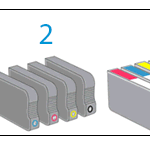The process of developing software encompasses various stages that collectively make up the Software Development Life Cycle (SDLC). Each stage plays a crucial role in ensuring the successful creation and delivery of software solutions. Beginning with the requirements gathering phase, the development team collaborates with stakeholders to define and document the project’s objectives and functional specifications. This initial phase sets the foundation for the subsequent stages, where the team designs, codes, tests, and deploys the software. Throughout the SDLC, it is essential to maintain clear communication, manage risks, and adhere to the industry’s best practices.
One well-known methodology and types of software development is the Waterfall methodology. In this approach, the development process proceeds sequentially, flowing like a waterfall from one phase to the next. Each phase must be fully completed before moving on to the next, ensuring a well-structured and disciplined process. While this method can be effective for projects with fixed requirements and clear objectives, it may not be suitable for projects with evolving requirements or those in dynamic and uncertain environments. The Waterfall methodology’s rigid nature limits flexibility and can hinder adaptability, making it less compatible with today’s rapidly changing business needs.
• The Software Development Life Cycle (SDLC) is a series of stages that are followed to develop software.
• The first stage is the requirements gathering phase, where the development team works with stakeholders to define and document project objectives and specifications.
• Clear communication throughout the SDLC is crucial for successful software development.
• Managing risks and adhering to industry best practices are important factors in the SDLC.
• One popular methodology used in software development is the Waterfall methodology, which follows a sequential approach.
• The Waterfall methodology requires each phase to be fully completed before moving on to the next, ensuring a structured process.
• However, the Waterfall methodology may not be suitable for projects with evolving requirements or those in dynamic environments.
• Its rigid nature limits flexibility and adaptability.
Agile Methodology
Short Paragraph 1: Agile Methodology emphasizes flexibility and collaboration throughout the software development process. This approach promotes iterative development, where work is divided into smaller, manageable increments called sprints. Each sprint focuses on delivering a specific set of features or functionality, allowing for frequent feedback and adjustments. Agile teams prioritize customer satisfaction and adaptability, valuing working software over extensive documentation. Regular communication and close collaboration between team members, including developers, product owners, and stakeholders, are critical to ensure the project stays on track and meets evolving requirements.
Short Paragraph 2: The core principles of Agile Methodology revolve around self-organization and continuous improvement. Agile teams embrace change, recognizing that requirements can and often do evolve over time. By breaking down complex tasks into smaller, more manageable units, Agile encourages regular inspection and adaptation. This iterative approach allows for faster feedback cycles and empowers teams to respond quickly and effectively to changes in project scope or priorities. Through a combination of short development cycles, regular meetings, and collaborative rituals like daily scrums or stand-ups, Agile helps teams maintain a steady pace of work while promoting transparency and accountability.
Waterfall Methodology
The Waterfall methodology is a linear and sequential approach to software development. It follows a rigid structure where each phase is completed before moving on to the next. The process begins with requirements gathering, followed by system design, implementation, testing, and finally, deployment. This methodology is known for its thorough documentation, as each phase is expected to be fully documented before progressing.
One of the biggest advantages of the Waterfall methodology is its emphasis on clear project planning and documentation. With a well-defined scope, requirements, and tasks, it allows for better estimation of time, effort, and resources required for each phase. Additionally, the linear nature of the process enables better prediction of project milestones and dependencies. However, one of the drawbacks of this approach is the limited flexibility for changes or adjustments once a phase has been completed. Any modifications to the requirements or design can be difficult and costly to implement, as they often require going back to the previous stage and starting over.
Iterative Methodology
Iterative methodology is a popular approach used in software development. It involves breaking down the entire project into smaller, more manageable phases, known as iterations. Each iteration follows a specific timeline and includes planning, development, testing, and release. The key difference in this methodology is that it allows for feedback and revisions after each iteration, providing the flexibility to make necessary adjustments as the project progresses. This iterative process enables developers to continuously improve and refine their work based on user feedback, leading to a more refined end product.
One of the significant benefits of iterative methodology is its ability to adapt to changing requirements. By breaking the project into smaller chunks, developers have the flexibility to alter and fine-tune their approach as needed. This allows the team to respond quickly to feedback and incorporate necessary changes, reducing the risk of expensive rework later. Additionally, the iterative approach promotes collaboration and communication within the development team and stakeholders. Regular feedback and engagement help ensure that the final product meets the intended objectives and satisfies the needs of the end-users. Overall, iterative methodology provides a structured yet adaptable framework for software development, delivering improved efficiency and a higher quality end product.
Scrum Methodology
Scrum methodology is an agile framework that is widely used in software development projects. It focuses on iterative and incremental development, allowing teams to quickly adapt and respond to changing requirements.
In Scrum, the development process is divided into short iterations called sprints, typically lasting two to four weeks. During each sprint, the team works on a set of prioritized user stories, which are small, manageable units of work. Daily scrum meetings are held to provide transparency and keep the team aligned on the project’s progress. At the end of each sprint, a working, potentially shippable product increment is delivered, enabling rapid feedback and continuous improvement. Scrum methodology promotes collaboration, self-organizing teams, and a constant focus on delivering value to the customer.
DevOps Principles
In today’s fast-paced and highly competitive software development landscape, organizations are constantly seeking ways to improve their processes and deliver high-quality software at a faster rate. One approach that has gained significant popularity is the DevOps methodology. DevOps principles emphasize collaboration, communication, and integration between software development and IT operations teams.
By breaking down silos and fostering cross-functional collaboration, DevOps aims to eradicate bottlenecks and streamline the software development life cycle. Continuous integration and continuous delivery (CI/CD) play a crucial role in achieving this goal. With CI/CD pipelines, organizations can automate the process of building, testing, and deploying software, enabling faster feedback cycles and reduced time to market. Additionally, the use of infrastructure as code helps ensure consistency and reproducibility across different environments, making deployments more reliable and efficient.
Furthermore, a key principle of DevOps is the monitoring and observability of systems. By implementing robust monitoring and alerting mechanisms, organizations can proactively identify issues, diagnose problems, and respond promptly to minimize downtime. With the adoption of cloud computing and container orchestration platforms such as Kubernetes, organizations can also scale their applications dynamically and make them more resilient.
In summary, by embracing DevOps principles, organizations can reap numerous benefits, including faster software delivery, improved collaboration, and increased operational efficiency. However, successful implementation requires not only technological prowess but also a cultural shift that promotes collaboration, transparency, and continuous improvement across teams. With the right combination of tools, processes, and people, organizations can unlock the full potential of DevOps and stay ahead in today’s ever-evolving software development landscape.
What is the Software Development Life Cycle (SDLC)?
The Software Development Life Cycle (SDLC) is a process used by organizations to plan, design, develop, test, and deploy software applications.
What is Agile Methodology?
Agile Methodology is an iterative and collaborative approach to software development that emphasizes adaptability, continuous improvement, and customer satisfaction.
What is Waterfall Methodology?
Waterfall Methodology is a linear and sequential approach to software development, where each phase of the project is completed before moving on to the next.
What is Iterative Methodology?
Iterative Methodology is an approach to software development where the project is divided into smaller parts or iterations, and each iteration involves the full SDLC process.
What is Scrum Methodology?
Scrum Methodology is an Agile framework that allows teams to work collaboratively, focusing on delivering high-quality software incrementally within short time frames called sprints.
What are the principles of DevOps?
The principles of DevOps include collaboration and communication between development and operations teams, automation of processes, continuous integration and delivery, and a culture of learning and experimentation.



